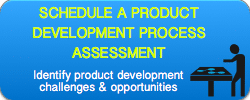If implementation of a web-based Product Lifecycle Management system is one of your company’s strategic goals, you are faced with the dual challenges of defining the needs of all stakeholders and evaluating the competing PLM solutions currently on the market. The key to accomplishing this goal with minimal “sweat equity” is to develop a clear and complete understanding of all functional requirements to fully inform your PLM vendor selection efforts.
To minimize risk and ensure a successful outcome, keep these 3 fundamental points in mind throughout all phases of the PLM vendor selection process:
#1 – Look for a Product Lifecycle Management system with out-of-the-box functionality that fits your business without the need for software customization.
- Document the detailed functional requirements for your PLM system, utilizing functional requirements templates to ensure comprehensive needs assessment.
- Look for a system with industry-specific functionality that is closely aligned with your company’s product development requirements.
- Look for functionality that can be configured through the web to accommodate the unique, specialized needs of users across your global product development value chain.
- Make sure the system meets high performance benchmarks and is easily scalable to accommodate future growth.
- Consider only PLM systems that are developed using open, industry-standard technologies.
#2 – Look for an installed base of PLM customers in your industry to use as references for real-world insight into the following issues:
 System uptime and reliability
System uptime and reliability- Ease of installation
- Intuitiveness of user interface
- System costs versus benefits
- Effectiveness of user training
- Ongoing system maintenance
- Vendor support services
#3 – Look for a strong software vendor who is committed to your market.
- Choose a vendor who offers a mature Product Lifecycle Management system with a long history in your industry and a demonstrated commitment to users.
- Consider only well-established vendors with sizable user bases; such vendors have incentives to invest in upgrades and new releases, taking guidance from their large customers to make PLM product improvements that benefit all of their users.
- Select a proven PLM vendor to leverage industry best practices that address your company’s specific requirements.
For the best results with PLM vendor selection and system implementation, talk to a qualified service provider who knows the Product Lifecycle Management market in your industry.
Look for a PLM system consultant who:
- Possesses in-depth knowledge of both Product Lifecycle Management and your particular industry
- Understands the responsibilities and information needs of each stakeholder in your industry’s value chain
- Recognizes the need to empower each stakeholder by ensuring there is a single point of truth for product technical data and logistics information
- Utilizes structured project delivery methodologies to facilitate successful completion of every step of the implementation process
- Provides a comprehensive range of services from product development strategy through business process improvement in addition to PLM system implementation and support
Zweave assists companies in all phases of PLM system implementation to streamline their product design-to-delivery processes and leverage industry best practice methods. To learn more about our proven approach and expertise, please download our whitepaper “15 Reasons to Choose Zweave for Your PLM Project”. 





